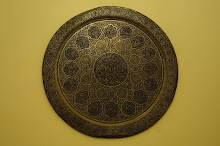 Review: The Rise and Fall of Alexandria - Birthplace of the Modern World, by Justin Pollard and Howard Reid. Penguin Books, 300 pps.
Review: The Rise and Fall of Alexandria - Birthplace of the Modern World, by Justin Pollard and Howard Reid. Penguin Books, 300 pps.This book in fact has two titles. The one above, and the one as registered in the Library of Congress, “The Rise and Fall of Alexandria – Birthplace of the Modern Mind”. It is much more the latter: Justin Pollard and Howard Reid do a great job at taking the reader through the intellectual adventure of the city and its contribution to the way moderns think.
Through nineteen chapters, the authors take us through the history of the city by looking at a series of geniuses, inventors and critical figures and what they contributed to the unique development of Alexandria.
The story begins with Alexander the Great, the founder who laid the outline of the city and its harbour with barley flour as birds dived to devour the seeds. He used the meal because of the lack of chalk in Egypt – a practical act that threads through the city’s classical history. Although this is the story of the scientists and philosophers of Alexandria, many of their findings, from the inventions of Archimedes to the geometry of Ptolemy were geared towards the practical and not just the speculative. The city’s history is replete with eccentrics creating odd devices and tricks through such things as steam power, or determined minds seeking to circumnavigate the globe.
Some stand out above the others. Erastothenes, who worked at Alexandria's great library, set out to measure the earth’s circumference. Despite ancient measuring devices, he was only off by 225 miles.
Some stand out above the others. Erastothenes, who worked at Alexandria's great library, set out to measure the earth’s circumference. Despite ancient measuring devices, he was only off by 225 miles.
Another savant was Philo, who stated that God is creativity itself. He was a believer in the “Great Chain of Being” and a man who mixed his Jewish heritage with Hellenism as the city itself merged Greek thought with Egyptian cosmology.
The revered Hypatia, teacher, mathematician, and leader of the city’s academic elite in its late Classical period - an era of decline that witnessed battles between its “pagan” roots and its newfound zealotry, Christianity. Hypatia was killed on the floor of the nave of a church by a Christian mob that “set upon her with broken pieces of roof tile, flaying her alive.”
Alexandria was the great cosmopolitan experiment in its time. It housed large, Egyptian, Greek and Jewish communities among many others. Its library provided a cultural hub and its merchant class and location meant it was the New York of its era, being connected to but also beyond the continent it sat upon.
Alexandria was the great cosmopolitan experiment in its time. It housed large, Egyptian, Greek and Jewish communities among many others. Its library provided a cultural hub and its merchant class and location meant it was the New York of its era, being connected to but also beyond the continent it sat upon.
However, another city today also offers a parallel: it has a kind of “library”, is a leading edge cultural hub, has a “Pharos”, a global wonder of architecture, and like ancient Alexandria, serves as an entrepot where many millions are made. That city is Dubai with its “Media City” and its great Burj, soon to be by far the tallest building in the world. Like Alexandria, it may even end up with a battle between a “pagan” or secular culture and the surrounding religious zealotry.
But Dubai has yet to show us its Hypatia, Erastothenes and Philo. Indeed, the book begs the question: where today are those figures that give birth to the future?













No comments:
Post a Comment